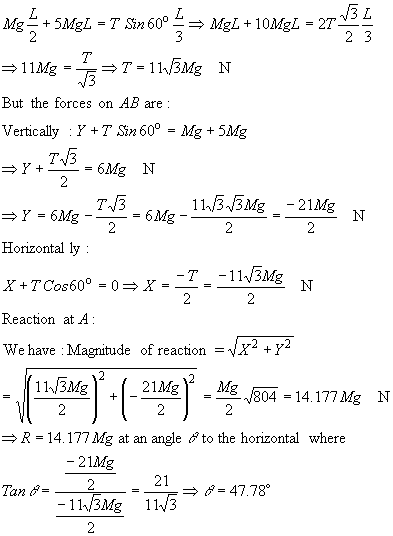If a rigid body is in equilibrium under the action of three forces in a plane then the lines of action of these forces must either all be parallel or else must meet at a point. We can consider separately the vertical and horizontal forces acting in a system as well as taking moments about a point. Typical questions involve calculations for step-ladders and supported beams.
Jointed Rods
Sample problem:
A uniform beam AB of mass M and length L is hinged to a smooth wall at A. It is supported by a light stay CD, which joins at point C on the beam to a point D on the wall (see Fig. 1). If the beam carries a mass 5M at B find the thrust in CD and the magnitude and direction of the reaction at A.

Solution
In Fig. 2 we identify and illustrate the forces acting in the system so we can build a mathematical model to simulate the beam arrangement:

The forces acting on the members are:
X = horizontal component of reaction at hinge A
Y = vertical component of the reaction at hinge A
T = thrust on CD
Take moments about A for AB:
